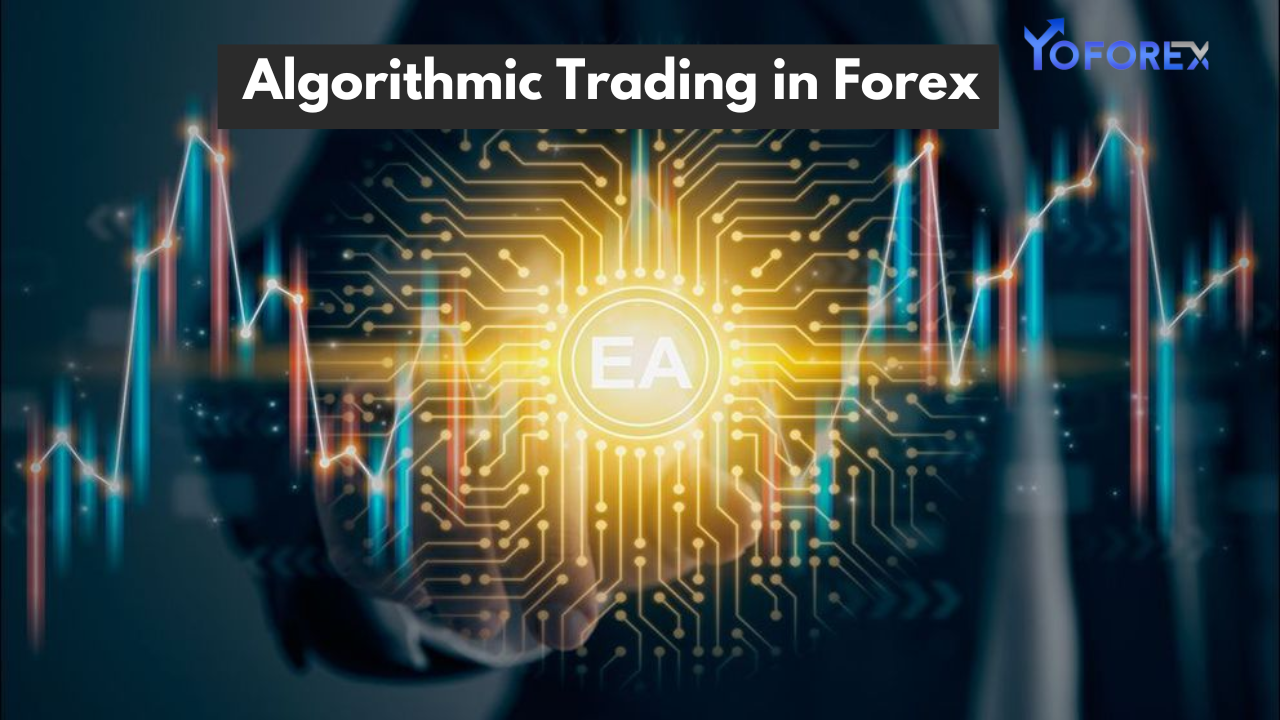The forex market, with its massive daily trading volume of over $6 trillion, is one of the most dynamic and liquid financial markets in the world. To navigate this fast-paced environment, traders increasingly rely on algorithmic trading (also known as algo trading). This approach uses pre-programmed software to execute trades based on defined criteria, offering speed, efficiency, and precision. In this blog, we’ll explore the role of algorithmic trading in forex, its advantages, challenges, and its impact on modern trading practices.
What is Algorithmic Trading?
Algorithmic trading involves using computer programs to execute trades automatically when predefined conditions are met. These algorithms analyze vast amounts of data, monitor market trends, and place orders faster than human traders.
How it Works:
- Input Parameters: Traders set specific conditions, such as price levels, volume, or technical indicators.
- Market Monitoring: The algorithm continuously monitors the forex market to identify opportunities.
- Order Execution: When conditions are met, the algorithm executes trades automatically.

Types of Algorithmic Trading Strategies in Forex
Algorithmic trading encompasses various strategies, each tailored to different market conditions and trader objectives.
1. Trend Following Algorithms
- These algorithms capitalize on sustained price movements by identifying and following trends.
- Example: Moving average crossovers, where a trade is triggered when a short-term moving average crosses a long-term moving average.
2. Arbitrage Strategies
- Exploits price differences for the same currency pair across different platforms or regions.
- Example: Buying EUR/USD on one exchange and selling it on another where the price is higher.
3. High-Frequency Trading (HFT)
- Involves executing thousands of trades in microseconds to capitalize on small price discrepancies.
- Requires ultra-low latency and advanced computing power.
4. Mean Reversion Strategies
- Assumes that prices will revert to their historical average over time.
- Example: Buying when a currency is oversold and selling when it is overbought.
5. News-Based Algorithms
- Analyzes economic news releases, geopolitical events, and sentiment to predict currency movements.
- Example: Trading based on central bank announcements or employment data.
Advantages of Algorithmic Trading in Forex
The growing adoption of algorithmic trading in forex is driven by its numerous benefits:
1. Speed and Efficiency
- Algorithms can process and act on market data in milliseconds, outperforming manual traders.
- Example: An algo can execute trades during volatile news releases before human traders react.
2. Emotion-Free Trading
- Eliminates emotional biases like fear and greed, ensuring disciplined execution of strategies.
3. Backtesting and Optimization
- Traders can test their strategies on historical data to evaluate performance and refine parameters.
- Example: Backtesting a trend-following strategy on EUR/USD data over the past five years.
4. Consistency
- Algorithms execute trades consistently without deviations from predefined rules.
5. 24/5 Market Monitoring
- Algos can monitor markets continuously, identifying opportunities even when traders are offline.
Challenges and Risks of Algorithmic Trading
While algorithmic trading offers numerous advantages, it also comes with challenges and risks:
1. Technical Issues
- Software bugs, server outages, or connectivity problems can disrupt trading.
- Example: A delay in order execution due to network latency can result in missed opportunities.
2. Over-Optimization
- Overfitting a strategy to historical data may result in poor performance in live markets.
3. Market Impact
- High-frequency algorithms may inadvertently increase market volatility or cause flash crashes.
4. Initial Investment
- Developing and maintaining robust algo trading systems require significant time, expertise, and financial resources.
5. Regulatory Concerns
- Regulatory scrutiny of algorithmic and high-frequency trading practices is increasing to ensure market fairness.
Tools and Platforms for Algorithmic Forex Trading
A variety of tools and platforms facilitate the development and execution of algorithmic trading strategies in forex:
1. Trading Platforms
- MetaTrader 4/5 (MT4/MT5): Offers Expert Advisors (EAs) for automated trading.
- cTrader: Provides an advanced algorithmic trading environment.
2. Programming Languages
- Python: Widely used for building and testing trading algorithms.
- MQL4/MQL5: Native languages for MT4 and MT5.
3. Data Providers
- Access to high-quality, real-time market data is essential for algo trading.
- Examples: Bloomberg Terminal, Thomson Reuters, and Quandl.
4. Backtesting Tools
- Platforms like QuantConnect and TradingView enable backtesting and strategy optimization.
5. APIs
- APIs from brokers allow traders to connect their algorithms directly to trading platforms.
- Example: Interactive Brokers API for automated order placement.
The Role of Artificial Intelligence in Algorithmic Trading
Artificial Intelligence (AI) is enhancing the capabilities of algorithmic trading by introducing machine learning and predictive analytics:
Applications of AI in Forex Trading:
- Sentiment Analysis: Analyzing social media and news for market sentiment.
- Pattern Recognition: Identifying complex patterns in historical data.
- Adaptive Strategies: AI algorithms evolve and adapt to changing market conditions.
Example: An AI-driven algorithm adjusts its risk parameters dynamically based on real-time volatility.
Algorithmic Trading for Retail Traders
While algo trading was once reserved for institutional players, advancements in technology have made it accessible to retail traders:
Benefits for Retail Traders:
- Access to affordable trading platforms and tools.
- Opportunity to compete with institutional traders using well-designed algorithms.
Tips for Retail Algo Traders:
- Start with simple strategies and gradually increase complexity.
- Use demo accounts to test algorithms before deploying them in live markets.
- Focus on risk management to protect capital.
The Future of Algorithmic Trading in Forex
The role of algorithmic trading in forex is expected to grow as technology advances:
Emerging Trends:
- Integration with Blockchain: Enhancing transparency and security in trade execution.
- Quantum Computing: Offering unparalleled computational power for complex models.
- Increased Regulation: Ensuring fair and stable markets.
Conclusion
Algorithmic trading has transformed the forex market by introducing speed, precision, and efficiency. While it offers significant advantages, it also demands careful planning, robust systems, and a thorough understanding of market dynamics. As technology continues to evolve, algorithmic trading will remain a cornerstone of modern forex trading, empowering traders to navigate the complexities of the market with confidence and sophistication.

